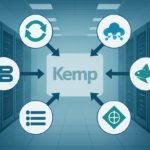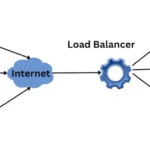Load Balancers have evolved to deliver a wealth of application optimisation features that go beyond simple high availability and resilience. Often when it comes to traffic management, there is a list of complex features that a Load Balancer can deliver. However if like me, you don’t know every IT acronym under the sun, then you might find yourself lost to these terms.
Implementing a solution that integrates with your live application services is a daunting prospect and vendors often fail to provide real-world explanations and useful guidance on how you can actually deploy and benefit from the functionality offered. “Oh we do dynamic routing at layer 7”, that is all well and good, but what does that mean for you?
First Up: Load Balancing Policies to Enhance Service Delivery

Using our “fastest” setting means that the LB will automatically calculate the response time for all requests per server smoothed over time and weight the server accordingly. Clever huh? All of these load balancing algorithms are explained in depth in our user guide.
Keeping Your Workers Connected
We have various options for managing cookies, depending on what you require for each service. For example, RDP 
Now to the Cool Stuff – Master Your Application Delivery
If your traffic is HTTP, which the majority of data is, we can perform a lot of smarts using our unique web-traffic manipulation engine called flightPATH. flightPATH is effectively a clever and configurable rule engine that inspects incoming requests and outgoing responses to manipulate traffic to enhance service delivery. We offer a library of the most commonly used policies for easy setup, including url redirects, content replacement and content switching.

flightPATH can also be used to produce security rules to force the use of HTTPS for certain directories. So for instance, if a client is accessing anything containing the /secure/ directory then they will be redirected to the HTTPS version of the URL requested. This is useful for connections that you want to encrypt from your client’s browser to the website, protecting sensitive information such as passwords.
Perhaps you want to see what kind of content people are looking for. We can use flightPATH to log spider requests, which effectively traces what people are looking at on search engines. Sales and marketing teams can use this consumer Intelligence to keep up-to-date with market interests and trends and use this info to influence product strategy.
This blog covers just a couple of useful implementations of traffic management but flightPATH provides a comprehensive toolkit for creating bespoke rules, so the only limit is your imagination.
That’s not to say it’s complicated and complex to manage. We are all about simplicity at edgeNEXUS and our marketing team regularly create and manage flightPATH rules. Believe me, they are not technical! If you are keen to put us to the test and see how easy it is to offer a customised service to your clients using traffic management get in touch.
Take a look at our web-traffic manipulation engine flightPATH here.











